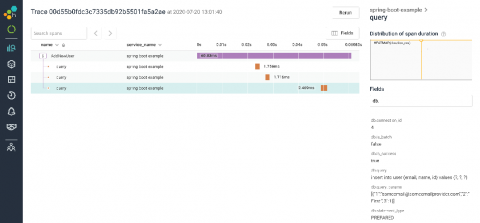Operations | Monitoring | ITSM | DevOps | Cloud
Latest News
DNS Monitoring 101 - How to Guard Against DNS Attacks
Today’s Tip of the Day is the second in a three-part series on Domain Name System (DNS) monitoring. In the first, we looked at how the application delivery chain works and the way in which many companies outsource their DNS to third parties with a global presence in order to reduce latency. The connected tip was focused on ensuring users are served by the correct DNS server.
Your IT Infrastructure Can Be Vulnerable - Even Without A Cyber Attack
On Friday afternoon, 17 July 2020, many internet users experienced connectivity issues around the same time. Even sites like Discord, Feedly, Politico, Shopify and League of Legends were inaccessible. Initially, it was suspected that there was some kind of Denial-of-Service (DOS) attack, but we’ve since learnt that the outage was caused by issues with CloudFlare’s DNS service.
Updates to the Java Beeline: Sweeter Than Ever Before
We’ve released some improvements to our Java Beeline library! Allow me to share all the interesting new features.
What Is Serverless Architecture?
Serverless has been around for a minute now but it’s safe to say that it’s still in its infancy in 2020 and definitely has a long way to go. But serverless architecture is a major step away from to dependence on humans and towards reliance on machines. Are the machines already talking over? Not literally the “Terminator” movie scenario quite yet but is this the beginning of the end of an era in the world as we know it?
Making Co-managed IT Work In the Real World (From Pros Who've Walked the Walk)
In the ChaosSearch era we solved the problem in 3 minutes
Through the Crisis: Nexthink Customer Stories (BG Engineering)
Nexthink is incredibly proud to be able to present yet another installment of our Through the Crisis series, in which our customers share their IT challenges and successes from the COVID-19 crisis. In this installment, Yves Habersaat (software engineer, BG Consulting Engineers) explains how his organization leveraged Nexthink to affect a significant update of their IT estate during the early stages of the pandemic.
Looking Forward with Legacy Application Logging
When developers think of log files and log analysis, their minds typically transports into the world of contributing factors and incident remediation. However, analyzing log events doesn’t always need to be about a specific bug and its corresponding resolution. In fact, log analysis can be a very useful resource for organizations looking to develop a more high-level and large-scale plan for their application moving forward.
InfluxDB Endpoint Security State Template
Our team recently discovered an exposed endpoint without authentication enabled, though we know it had previously been required. The root cause was a missing configuration as a result of a recent upgrade a few weeks earlier, and was easy to fix by simply enabling the configuration parameter correctly. We needed a way to catch this type of issue quickly going forward, for this and for other public endpoints, which should be secure by default. Here is how we solved it.











